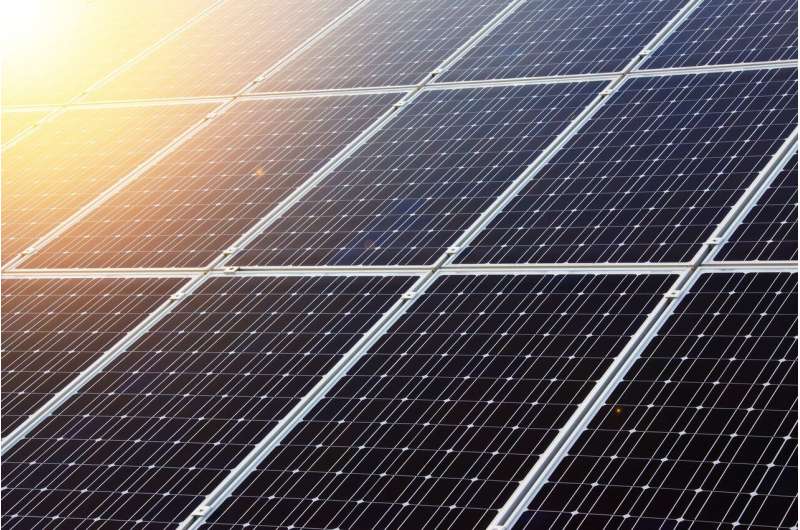Perovskite solar cells achieve 27.2% efficiency with improved chlorine distribution
In recent years, perovskite has emerged as a promising solution for cheaper, more efficient solar energy. This advanced synthetic material is made from crystals that mimic the naturally occurring crystal perovskite (calcium titanate).
Among the problems holding it back are achieving the maximum power possible from the sun’s rays and long-term durability. But researchers at the Institute of Semiconductors, part of the Chinese Academy of Sciences, have developed a technique that breaks a world record for efficiency and improves the durability of solar cells.
The main problem preventing perovskite solar cells from reaching their potential is the use of a chemical called methylammonium chloride (MACI) in the manufacturing process. It helps the crystals grow, but during the heating process, the scientists discovered that chlorine ions start to move, clump up and aggregate near both the top and the buried surface of the film. This film is a thin layer of perovskite material that sits inside a solar cell, and the uneven distribution of chlorine ions limits its maximum power output.
Simple solution
The research team has published their solution to the chlorine clumping issue in the journal Science, and it is surprisingly simple. They just added an alkali metal oxalate (potassium binoxalate) to the liquid perovskite mixture before the film is made.
When this new ingredient is added, it dissolves and releases potassium ions that stick to the migrating chlorine ions to form a new, stable salt (potassium chloride). The result is a uniform, homogenized distribution of chlorine that prevents the defects from forming.
“Our strategy of homogenizing chlorine distribution not only boosts efficiency but also greatly enhances the operational stability of perovskite solar cells,” said corresponding author Jingbi You. “This could be a game-changer for the commercialization of perovskite photovoltaics.”

Record-breaking achievements
The researchers conducted extensive testing on their new perovskite solar cell devices and achieved record-breaking results in several areas. They demonstrated a power conversion efficiency (PCE) of 27.2%, meaning the solar cell successfully converted 27.2% of the total energy from the sun hitting the panel into usable electricity. This was independently verified as a world-leading standard for perovskite solar cells.
The devices also retained 86.3% of their initial efficiency after 1,529 hours of continuous operation at maximum power under 1 Sun illumination. They also maintained 82.8% of their internal efficiency after 1,000 hours of operation at 85 degrees Celsius under full sunlight.
While the researchers have dramatically improved chlorine distribution, they acknowledge that there is still work to be done, as some patches of unevenness remain.
They also found a large number of defects at the buried interface, the boundary between a perovskite layer inside a solar cell and the rest of the structure. The next steps will focus on reducing defects and creating a more uniform layer.
Written for you by our author Paul Arnold, edited by Sadie Harley, and fact-checked and reviewed by Robert Egan—this article is the result of careful human work. We rely on readers like you to keep independent science journalism alive.
If this reporting matters to you,
please consider a donation (especially monthly).
You’ll get an ad-free account as a thank-you.
More information:
Zhuang Xiong et al, Homogenized chlorine distribution for >27% power conversion efficiency in perovskite solar cells, Science (2025). DOI: 10.1126/science.adw8780
© 2025 Science X Network
Citation:
Perovskite solar cells achieve 27.2% efficiency with improved chlorine distribution (2025, November 17)
retrieved 18 November 2025
from https://techxplore.com/news/2025-11-perovskite-solar-cells-efficiency-chlorine.html
This document is subject to copyright. Apart from any fair dealing for the purpose of private study or research, no
part may be reproduced without the written permission. The content is provided for information purposes only.

Comments are closed